The History Of Nissan Sunny
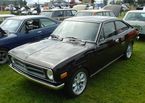
The Nissan Sunny is a small car from Nissan. It was launched in 1966 as the Datsun 1000 and although production in Japan ended in 2004, it remains in production today for the African and American markets. In the US, the later models were known as the Nissan Sentra; in Mexico, the Sunny is known as the Nissan Tsuru. The Sunny fit neatly into Nissan model line. It was larger than the supermini Nissan March (Micra) models, but not as big as the compact Bluebird models. The latest versions of the Sunny were larger than the early models, and may be considered compact cars. Earlier versions (through at least the B11 series) were subcompact cars. All Sunnys through the 1982 model year (except as noted below) used Nissan A engine motors.
Confusingly, the "Sunny" name has been used on other Nissan models not part of the Sunny (B-series) family, notably various export versions of the Nissan Pulsar model line.
The first Nissan Sunny, exported as the Datsun 1000, was launched in September 1966, with two body styles, a two-door sedan (B10) and a van/ station wagon (VB10). These were available in both a "Standard" and "Deluxe" version, featuring drum brakes, conventional leaf springs at the rear and wishbone type independent front end. The front end used a single transverse leaf spring.
The car featured a 4-cylinder in-line engine – the A10 – with a total displacement of 988cc and a 4-speed gearbox.
The 1968 model, introduced in October 1967 added to the lineup the four door sedan (B10) in both DeLuxe and Standard form. October 1968 saw the new 1969 models released with a new coupé (the KB10) added. Marketed as a "Sunny Coupé" in Japan, it was available in a wide variety of levels from "Standard", to "GL" (ostensibly "Grande Luxe"). The range of factory options and accessories was by this time vast. Total horsepower in the 1968 model was claimed to be 62hp at 6000rpm.
All of the other models got new grilles and larger tail lights, which now included reversing lights in the van/ wagon model.
The only other country that seems to have received the coupé is Australia, where it was marketed as the "Datsun 1000 Coupé". It was well equipped, and was available only in the Deluxe level of trim. The Australian Deluxe model came standard with many inclusions that were available only as options in the Japanese model. The engine in the coupé had higher compression, a different Hitachi carburettor, and a dual outlet exhaust manifold. These changes increased its power output to 66hp (a 4hp, or 6.5% increase over other models).
Unlike the other models, the coupé was only ever made in right drive.
July 1969 saw the release of the slightly different (cosmetically) 1970 models which left the 1969 model run at only nine months. No additional models were added, and production ceased in December 1969, cutting the 1970 model run at only six months.
The Sunny Truck debuted in October 1968 and was the light commercial truck variation of the B10 passenger models. It was based on the VB10 Van chassis, and is a body style which is correctly known as a Coupé Utility. This is known as a "Ute" in Australia and "Sunny Truck" in Japan.
Being a commercial model, these were only ever available in Standard trim. The equipment was basic, but this kept the price low.
The B20 used the same wheelbase and running gear of the Datsun 1000 VB10 van.
The second-generation Sunny launched in 1970 and was also known as the Datsun 1200. This new model was slightly larger in all dimensions to match its market rival, the equally popular Toyota Corolla.
The Datsun 1200 featured MacPherson strut front suspension with optional disc brakes and an economical 1.2-liter A12-series engine. A 5-door station wagon was added to the Sunny range in addition to the 3-dr wagon. In April 1970 a GX Grand Luxury trim with twin-carburetor engine was added for the Japan domestic market. In January 1972 a minor facelift occurred in the Japan market with a new hood, grille and other small modifications and equipment fitting. In August 1972, the GX-5 model was added in Japan, which improved on the GX by fitting a direct-fifth (non-overdrive) five-speed manual transmission. For the 1973 model year, USA models were re-specified with energy-absorbing bumpers, fire-resistant interiors and other government-mandated safety items.
The B110 made its racing debut at the Fuji 200 Mile race November 23, 1970 in the TS1300 class. In this class which was effectively a Toyota Corolla monopolistic state it was challenged by only one Nissan works car, but with beautiful victory for driver Suzuki Makoto.
In Australia, the Datsun 1200 was highly regarded for conversion to a 2WD rally car. The Datsun 1600 generally rated highest among entry-level Datsuns, and the 1200 a close second.
The Datsun 1200 was the most fuel-efficient vehicle in the United States in 1973, as rated by the government at 28.7mpg-US (8.20L/ 100km; 34.5mpg-imp) in overall driving pattern. It achieved 37.9mpg-US (6.21L/ 100km; 45.5mpg-imp) in highway driving. At its United States introduction, it was the lowest price car at $1866. (Road & Track magazine, November 1970)
In Mexico, the Sunny B110 was marketed as the Nissan Sentra.
In South Africa, the B110 was sold through 1976.
In New Zealand, a special edition Datsun 1200 SSS 4-door sedan with twin side-draft carburetors and other racy features was marketed.
In Portugal, a special Datsun 1200 S1 2-door sedan was marketed.
In North America (US and Canada), there were an average of 44,000 Datsun 1200s sold each year for three model years.
- Coupé total sales: 89,541
- 2-door sedan total sales: 43,761
Reference: Nissan model guide sheet
April 4, 1971, halfway through the model year, the Sunny Excellent (PB110 series) debuted for the Japan domestic market. It was based on the B110, but with new hood, fenders and grille, and featured a SOHC 1.4-litre Nissan L engine. The front overhang was extended 130mm and the wheelbase 40mm. In Mexico this was marketed as the Sentra 1400.
At the Tokyo motor show, October 19, 1972, a Sunny Excellent with Nissan's two-rotor Wankel rotary engine was exhibited (Article on Datsun1200.com). Wheels magazine drove this car on the race track.
The B120 commercial truck debuted in February 1971, based on the B110 passenger car chassis. The B120 used the same wheelbase and running gear of the Datsun 1200 sedans, coupé and wagon models. Initially it used the same stainless steel grille as the 1200 sedan, and the rectangular gauges of the Standard model B110s. Both regular (B120) and long-bed (GB120) models were offered. After the 1200 car series ceased production the B120 continued. Interestingly, in certain markets the B120 was actually badged as 120Y, to correspond as part of the updated 120Y range. The B120 ute was sold in Australia until 1985. It was marketed in New Zealand during the 1980s in two trims: RoadStar and SportStar. This model was known as a bakkie in South Africa. It's capable of 49mpg-US (4.8L/ 100km; 59mpg-imp)).
In 1978, in the Japan market the B121 model replaced the B120, with the most notable change being a switch to a plastic grille of the type used by the B110 Coupé. Also notable was a change to upscale round instrumentation.
In November 1989, an updated B122 and GB122 (longbed) models replaced the B121. Prominent among changes was a switch from round headlights to rectangular ones (along with new grille to accommodate this change). However other significant changes included:
- front disc brakes
- catalytic converters
- NOx Conforming (emission controlled) models RB122 and RGB122
B122 was manufactured in Japan into 1994, all models using carburetors and A12 engine.
The Sunny Truck lives on South Africa, though no longer marked under the Datsun or Sunny names. The B140 variation, now with 1.4-liter A14 engine, continues to be manufactured and sold in 2008 by Nissan South Africa as the Nissan LDV 1400.
Exported as the Datsun 120Y and Datsun B-210 (in North America), the third generation (1973–1978) Sunny was extremely popular as it debuted during the gas crisis of the 1970s. It continued to be the fuel-economy leader in North America and one of the least expensive cars available. At the time body styling was popular with buyers. The American model's safety bumpers actually were said to "improve" the styling. One name in particular used for the American market 120Y was the "Datsun Honeybee". Although regular production in Japan as well as sales in most countries ended with the 1978 model year, the B210 series continued to be produced by Nissan South Africa through 1980.
The 1978 B-210 (American model) with 5-speed transmission was rated by the United States Environmental Protection Agency at 50mpg-US (4.7L/ 100km; 60mpg-imp) highway fuel economy.
The 120Y was sharply criticized by magazines such as Wheels of Australia, which felt that it offered no true improvement on its predecessor, not surprising given that the B110 platform was carried over, but used a slightly revised A12 engine. Like some Nissans of this period, it tended to be overstyled.
The related Sunny Excellents continued as PB210 models, fitted with a 1.4-litre L14 engine. In 1976 Nissan changed the Sunny Excellent from a distinct vehicle model (PB210) to simply a trim-level option for the regular B210, now fitted with 1.6-liter L16 engine.
Six bodystyles were offered: 4-door sedan, 2-door sedan, 3-door coupé, 3-door wagon, 5-door wagon and 3-door van. The coupé still retained fastback styling, but now featured a full hatchback door rather than the small boot lid of the previous generation Sunny. In Australia these same bodies were known simply as the Four Door Sedan, the Two Door Sedan and the Coupé. In North America, the wagon was not offered.
Road & Track was somewhat critical of the B-210 in their 1975 test[citation needed]. They criticized the "modest performance" of the "peppy" engine, but were impressed with its 27mpg-US (8.7L/ 100km; 32mpg-imp) fuel economy. B210 pricing started at US$2849 that year.
This chassis formed the basis for the S10 chassis on the Nissan Silvia.
US-market models were fitted with these A-series engines (years given are model years):
- 1974: A13 engine, 1.3L (1288cc) OHV I4
- 1975-1978: A14 engine, 1.4L (1397cc) OHV I4, various horsepower ratings from 65-85 hp
In most markets, the B210 line featured as the only engine option a re-designed A12 engine. However, in the South African market they also featured L14 and L16 engine options, as well as a special edition of B210 coupé badged as a 140Z and a 160Z. The 140Z and 160Z featured twin SU carburetors and a 5-speed transmission.
The final rear-wheel-drive Sunny from model year 1978 to 1982 featured numerous variants, including a fastback station wagon as well as more squared-off, utilitarian models with three and five doors, a coupé, and two- and four-door sedans. These models appeared with Datsun 120Y, 130Y, 140Y and 150Y badges in some markets (depending on engine size) though Sunny was increasingly used for export, too. The North American version was marketed as the Datsun 210. The B310 was known for its high equipment levels and build quality at the time. It was available with the same A-series engines as its predecessor although the B210's optional 63 series 5-speed transmission was replaced with the smaller 60 series unit. The leaf spring rear suspension was discontinued and the live axle was now suspended using a coil spring four-link configuration. In 1980, the B310 was given a mild facelift, with a smoothed off front end, a grille with square headlamps, and a redesigned dashboard.
In North America, the only wagon offered was the fastback version. In Japan, this fastback wagon was a special model called the Sunny California. In most other markets, a more traditional two-box wagon was offered.
This model marked the first and only time the "Sunny" name was used in Australia
This chassis, along with the A10 chassis on the 160J/ Violet/ Stanza formed the basis for the S110 chassis on the Nissan Silvia.
In most markets, the A12 engine was the only, or most common engine offered. However B310s in various markets were fitted with the following A-series engines:
- A12 (1171 cc, not offered in North America)
- A12A (1237 cc, North America only)
- A13 (Short Deck Engine)
- A14
- A15
In North America, the Datsun 210 engine line ups were as follows:
- 1979 - A12A or A14
- 1980-1982 - A12A, A14 or A15
The special MPG model comprised of small-port A14 with 5-speed transmission achieved 47mpg-US (5.0L/ 100km; 56mpg-imp) per US standards.
The B11s were the first front-wheel-drive Sunnys—predating the same shift to front-wheel drive by their main Toyota Corolla rival—and were exported to the United States as the Nissan Sentra from the 1982 model year onwards.
The B11 series was regarded as one of Nissan's most modern ranges at the time, and was the first to abandon the Datsun name formally (though a small 'Datsun' still appeared on boot lids for the first two years). The wagon was known in its home market as the Nissan Sunny California. It was launched in late 1981 and continued into 1985.
The B11 was the first Mexico-market Sunny to be named Tsuru.
A completely unrelated vehicle - albeit using a similar drivetrain - the Sunny-Vanette, was introduced in 1980. This was exported to most markets as the Datsun C20 van. It later became the Nissan Vanette.
A further spin-off from the Sunny line was the Nissan Laurel Spirit, which was essentially a rebadged Sunny sedan designed to capitalize on the premium image of the larger Laurel line.
Yet another spin-off from the Sunny line was the "Nissan Sunny Maxima", which was sold only in limited numbers in the United Kingdom, and was totally unrelated to the "Bluebird Maxima", which was simply just sold as the "Maxima" in the United States, and continues to be its own model spun-off from the Bluebird range to this day. However, the "Sunny Maxima" line in the United Kingdom did not have any comparison to the "Bluebird Maxima" line in any shape or form. The "Sunny Maxima" line consisted only of upgrades such as a sunroof, enhanced exterior trim, only available with a 5-speed manual, chrome tailpipe, dual waveband radio meeting United Kingdom radio authority specifications, and deluxe carpeted floor mats, whereas the "Bluebird Maxima" line consisted of leghtned front end and overhang for first the L-series inline-6, then the VG in later generations as front wheel drive, sportier, crisper suspension for Fairlady Z like ride and handiling, and a semi-luxury interior and features such as power seats, leather, automatic suspension control, and in some generations, a digital electronic instrument cluster, and has been known in the United States as the "4-door Fairlady Z", and the current generation now long spun off from the Bluebird line to this day as the "4-door Sports Car {4DSC}]
Nissan Vanette
In 1981, a vehicle not related to the Sunny, the Vanette, was introduced. It was exported to most markets as the Datsun C20 van. Later, the name of this vehicle was changed to simply Nissan Vanette. Eventually, this van was replaced by the Mazda Bongo (also known as the E-series), which was sold under an OEM licensing deal as the Vanette.
Yet another vehicle, the Vanette Cargo, was sold under the Vanette name, in Europe as well. This van was based upon the Nissan Serena, and was unrelated to either the Sunny or the C20 van.
From 1985, the B12 was not as widely exported, apart from the station wagon model. This line is characterized by its squared-off styling, which was very unfashionable by the mid-1980s. The angular styling was insisted upon by Nissan's design chief at the time and contributed to the automaker's increasingly poor sales of the period. A four-wheel-drive variant was introduced during this generation. Known as Sentra in some markets.
In October 1986, European markets saw the B11 Sunny replaced by a rebadged N13 Pulsar in hatchback and saloon form (the hatchback replacing the previous N12 Pulsar, sold as the Cherry in this market). These were sold alongside the B12 Sunny estate and coupé.
For the Nissan Sunny sold in European markets during this period, see N14 PulsarThe B13 was introduced in 1990 and retained many of the B12's ideas but in a more rounded, up-to-date body. It was particularly successful in the United States where the sports model two-door Sentra SE-R was marketed by Nissan of America as a latter-day BMW 2002. The car is still being made in Mexico, where is it sold as the Tsuru, for domestic and export markets (in Chile as Nissan V16), and is quite popular among cab drivers for its reliability and low maintenance costs. It was also part of the image of the former Mexico City mayor Andrés Manuel López Obrador, who drives a white Tsuru. A wagon version was also sold as the Nissan Tsubame (which, with the T removed, means "get me on top" in Spanish, and swallow, the bird, in Japanese). In Taiwan, it is known as the Nissan 331.
Many units of Nissan V16 in Chile have said to last at least 500.000 or up to 700.000 km under worst conditions without opening the engine block for adjustments.
In Mexico, the Nissan Tsuru is still the best selling car in its category as it’s much bigger and cheaper in maintenance than its direct competitors: the Volkswagen Pointer and the Chevrolet Chevy C2. The 2007 model is available in 2 trims: the GS 1 and GS 2. Both trims use a 1.6 liter 16-valve (ga16dne) engine producing 105 hp and can be equipped with an automatic gear-box and air-conditioning. A 2007 Nissan Tsuru GS1 costs approximately USD 9,500.
In Malaysia, known as Nissan Sentra Super Saloon with GA16DE fitted engine with two version (1st models & last models), it is widely used as a taxi in Genting Highlands, due to its engine durability and fuel efficiency in such conditions.
There are two versions of Nissan Sunny, the GTS generation 1 and the GTS generation 2. The GTS generation 1 consists of the glass headlights, generation 1 front bumper ( with 2 projector lamps), side skirts, rear chin, sunny grille and the rear garnish. The GTS generation 2 consists of the plastic headlights, generation 2 front bumper (with 4 fog lamps), side skirts, rear bumper, sentra grille and the rear garnish. There are some differences in other parts like the rear garnish and the side skirts.
The B14 Sunny and Sentra appeared in 1994 and were produced until 1998, and featured four-wheel-drive variants. Other than Japan, this variant was produced in Pakistan through a joint venture between Gandhara-Nissan and Nissan Japan till 2001 for the local and export markets.
In this generation, the station wagon was supplied to Mazda under an OEM deal as the Familia Van. The Nissan Wingroad range appeared as a spin-off of the Sunny line in Japan, denoting a highly specified station wagon that replaced the Nissan Sunny California. Both the Mazda Familia and the Nissan Wingroad had different front and rear ends compared to the wagon that was exported.
Nissan Mexico sold versions of this as the Sentra with a 1.6 engine GA16DE from 1995 to 1997, GA16DNE from 1998 to 200 and 2.0 engine (SR20DE) in the GSS version (top of the line).
Thailand and other selected Asian countries had this model of B14 from 1994 until 2000 with a few minor changes along the way. First minor change shows when the rear changes to split the red strip into two sides, next the face changes in a few years with a small ridge i the middle of the hood and a chromium decoration on the hood tip, finally the last minor change, the tail light style changes from two layers of white/ red to be the three layers red/ white/ red. The two variants of engines is 1.5L (in the first generation) and 1.6L (available only after some minor changes).
All models were equipped with Multi-link Beam Suspension for the rear.
The Sunny was produced up to the B15 series, from 1998 to 2007. For the 2005 model year in Japan, the Nissan Tiida took over this market, replacing the Sunny model line. In the United States, the Sentra continues with 1.8 and 2.5 litre engines, and carries on the Sunny lineage, though plans are to make the next Nissan Sentra based on something other than the discontinued Sunny chassis.
In Japan, the Sunny was offered with 1.3, 1.5, and 1.8L petrol or 2.2L diesel engines.
Also to be noted is that while earlier North American-market Nissan Sentras were very similar to their Japan-market B-series Nissan Sunny twins, the B15 Sentra (2000–2006) diverged greatly from the B15 Sunny. The Sentra B15 body looks similar to the aero-look B14 body, while the Sunny B15 body is return to the more traditional squared-off off 3-box sedan design. In Japan the B15 was marketed as the Nissan Super Sunny.
The Wingroad station wagon and the badge engineered Mazda Familia Van (1.3, 1.5 and 1.8 L) continued to be spun off from the main Sunny range. A facelift for the Wingroad in 2002 gave it a new front end, though the rear was retained.
A new Wingroad wagon was released in 2005, based on the Tiida.
Main article: Nissan PulsarAlthough the Nissan Pulsar range (N-series family) was a separate model line with different heritage from Sunny (B-series family), for various reasons the Sunny name was -- in some markets -- applied to various Pulsar vehicles.
The Sunny name was used on the Pulsar N13 series in Europe from 1987, and was a successful model. In Malaysia and elsewhere the car known as the Nissan Sunny 130Y was a rebadged B11.
The N14 Pulsar was introduced in 1989 in Japan and in 1991 for Europe, badged as the Sunny. It introduced the 2 litre turbocharged 4-wheel drive GTI-R. The N14 came in five engine variants: 1.4, 1.6 and 2.0L petrol (GTI), Diesel 2.0L and the turbo 2.0L SR20DET. It was replaced by the N15 Nissan Almera in 1996.
Although the N16 Pulsar did not spawn a Sunny range in Japan, the N16 Nissan Bluebird Sylphy was sold as the Sunny Neo in Thailand and Sunny in Hong Kong (In Hong Kong only the 1.5L QG15DE engine was imported by the dealer), Kenya, Singapore, Sri Lanka (where it is one of the best sellers), and the People's Republic of China(1.6L and 1.8L model, later the QR20DE equipped 2.0L model also available). The Sunny is produced for the Chinese market by the Dongfeng Motor Company, a joint venture with Nissan.
Also, the N16 series is sold in parts of Latin America as Nissan Almera. For 2007 model year, its platform changed to the Renault Samsung SM3 that is sold in northern Europe as Almera Classic. Also since 2007, the Samsung SM3 is sold as a Nissan Sunny in the Middle East.
From Wikipedia, the free encyclopedia
More About Nissan Sunny
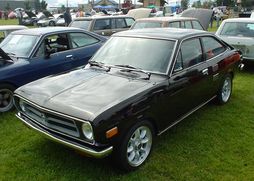
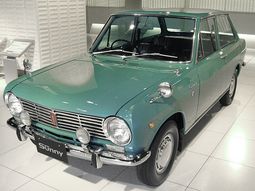
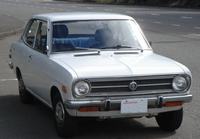
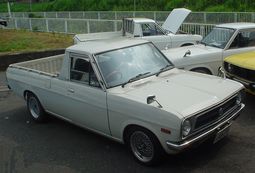
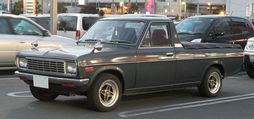
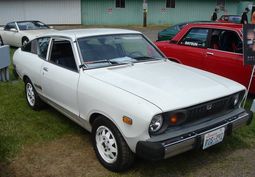
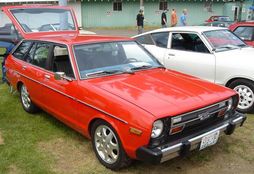
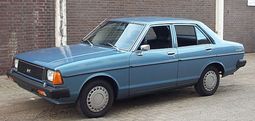
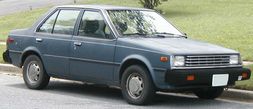
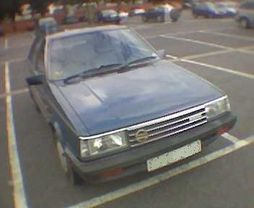
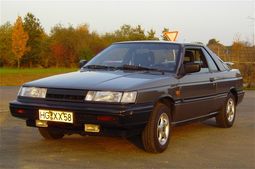
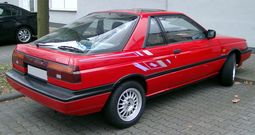
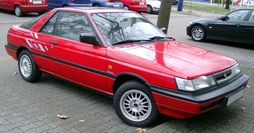
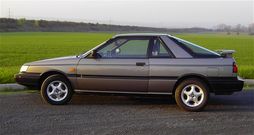
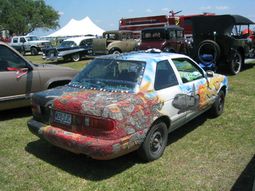
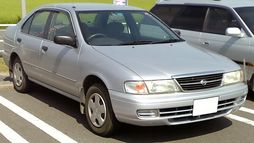
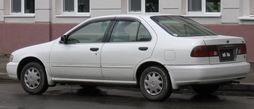
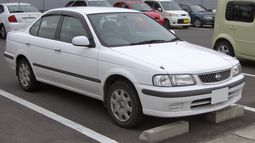
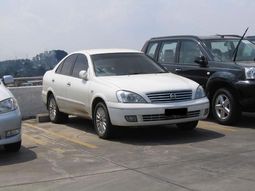
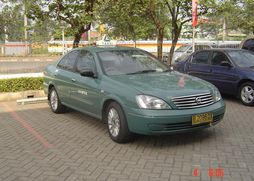
|